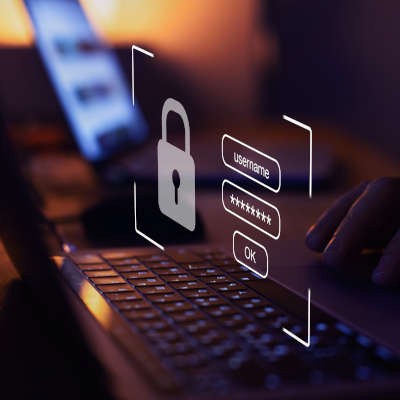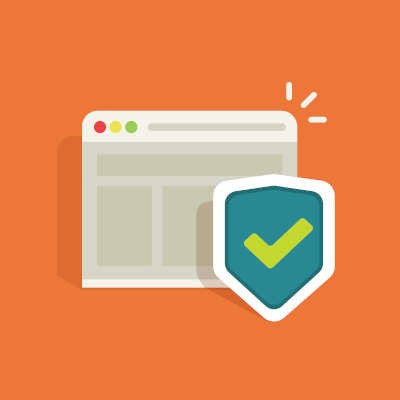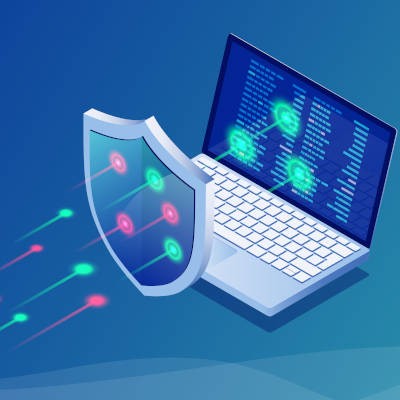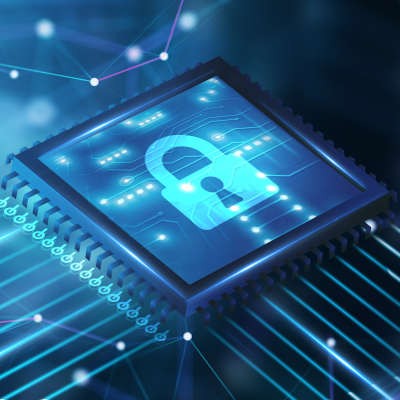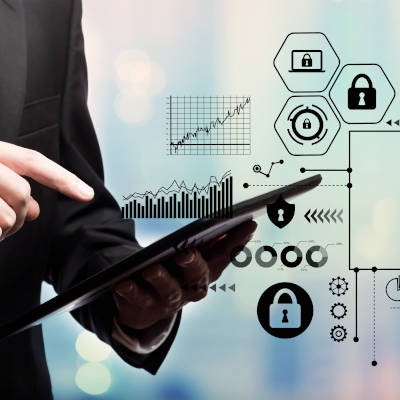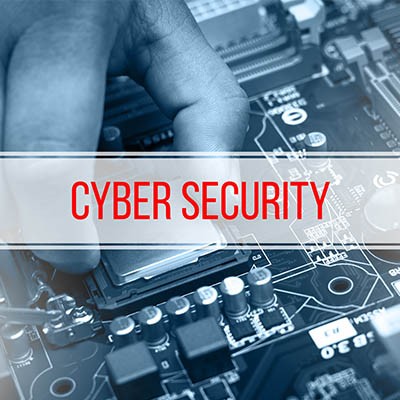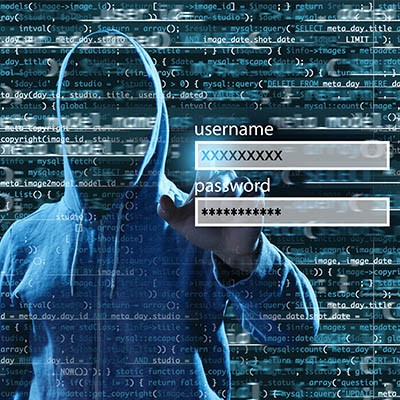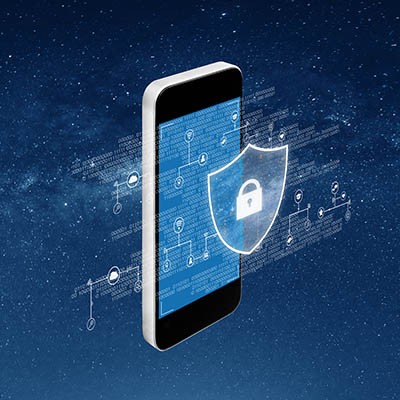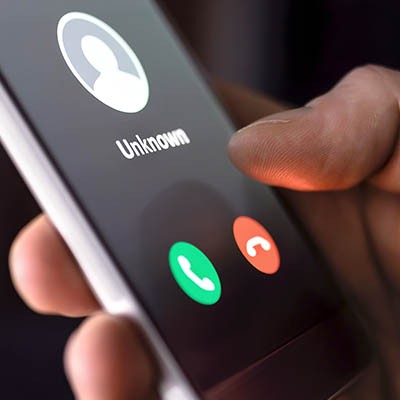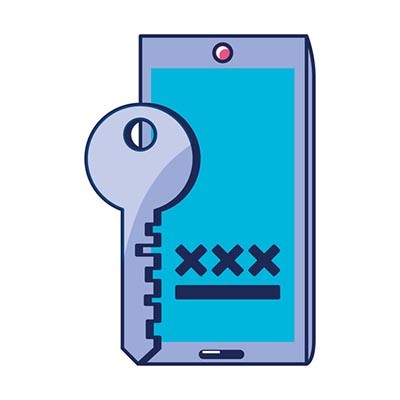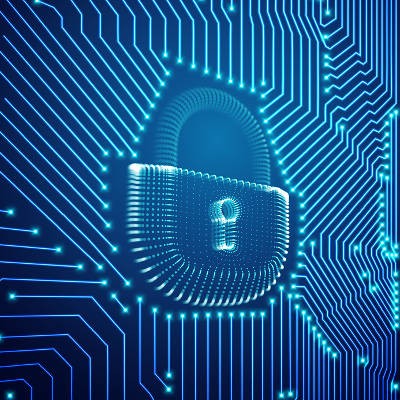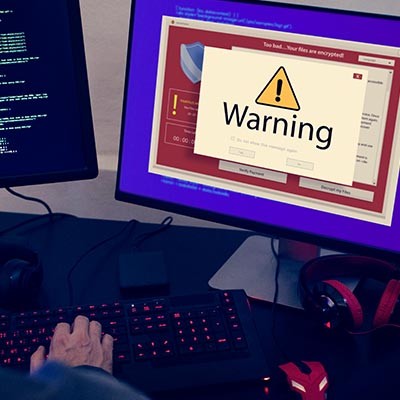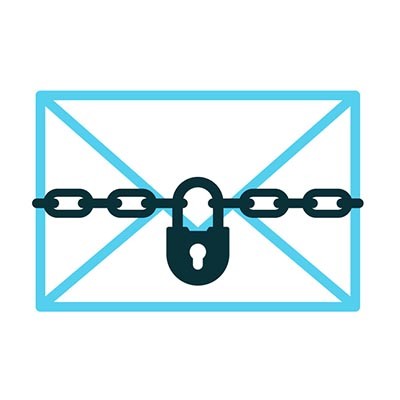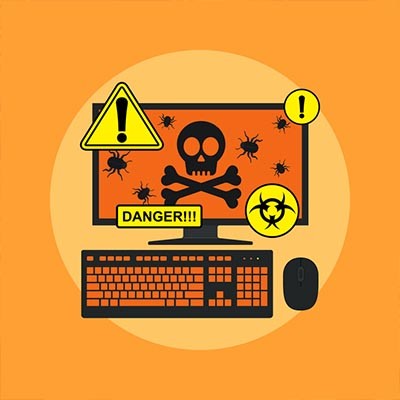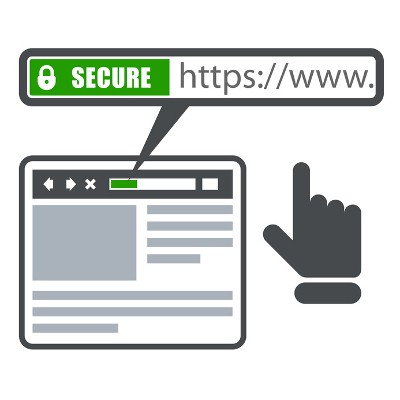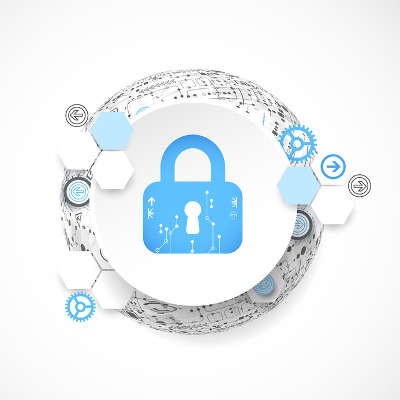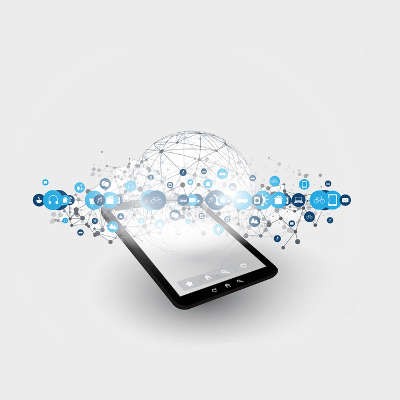k_Street Consulting, LLC Blog
Patients and hospital visitors have come to expect Wi-Fi internet access. It’s no longer seen as an extra convenience, but a requirement for the comfort and confidence of your patients. That said, it’s your responsibility to provide reliable Wi-Fi access that is reasonably fast, secure, and easy to sign into.
We’re all familiar to some degree with the security measure known as CAPTCHA. You know the one—you usually see it when filling out forms or logging into sites online, where you have to prove that you’re a human being by identifying which of a variety of images fit a certain description. You may have noticed that these tests have gotten far more difficult over time. This is because, predictably, computers are getting better at beating them.
Let’s face it, it is nearly impossible for the modern business to stay ahead of every cyberthreat. It is just too much to proactively ward against. Today’s best practices will try to keep your network from being breached and your data from being stolen, but they may just allow you to understand how your network was breached and how your data was stolen. Unfortunately, cybersecurity is not foolproof, but let’s look at a few strategies you can use to improve your chances of holding onto your data and keeping unwanted actors out of your network.
A lot is made about data breaches and hackers, but I think you’d be surprised to find out that over 80 percent of cyberattacks are the result of stolen authentication credentials. This has led many security-minded IT administrators to try and find a better way than the old username & password strategy that we’ve all been using for as long as there have been user accounts. One organization that is actively making waves trying to replace the username/password combo is Microsoft. They are at the forefront of the move to passwordless authentication.
Many businesses need their employees to do the same thing day-in and day-out. With that type of repetitiveness, situations pop up where some crucial stuff is overlooked. Employees that are distracted with their own productivity are susceptible to making mistakes that could have dire consequences for your business. This month we thought we would give you a few pointers on how to communicate the importance of vigilance to your dedicated employees.
Regulations are put in place for a reason: the data you keep is sensitive. Within certain environments, it is extremely important to know how to navigate so as not to mistakenly expose information that has no business being shared. This month, we thought it would be a good time to talk about how to navigate these highly-regulated environments to ensure success and security.
Google Chrome is currently used by 69 percent of global desktop Internet users, as of July of 2020. With such a large amount of people using Chrome, its security becomes even more important… which makes it all the worse that many people are unaware of the permissions that some of its extensions claim.
Today’s business has to prioritize its data security. There are endless examples of businesses that haven’t done enough. Some aren’t around anymore. To help you build a strategy, we’ve put together four questions that need to be asked to give you a chance to outwit and overcome the endless threats your company could run into online.
To effectively manage the risk that your business is under due to cybercriminals and their activities, it is important to acknowledge what attacks your business may soon have to deal with. Due to the increased accessibility of artificial intelligence and related processes, we predict that cybercrimes will likely use AI to their advantage in the very near future.
Windows 7 was the most popular operating system Microsoft ever created. It’s so popular that months after the software giant officially retired their record-breaking OS, some businesses continue to use it. Today, we will take a look at why some businesses haven’t moved off of Windows 7, and what effect it could have on their company.
With some motivation from the ongoing COVID-19 pandemic, many businesses are adjusting their approach to cybersecurity. Typically, businesses would take a more measured approach in their day-to-day security improvements, while swiftly acting if there was any kind of clear and present danger. While this proved effective, the current situation has now shifted priorities over to maintaining resilience. Let’s examine some of these shifts, and how an advantage can be gained through a consistent cybersecurity strategy.
Smartphones now come with a variety of ways that users can elect to unlock their device, from biometrics to tactile patterns to good, relatively old-fashioned personal identification numbers. Of course, not all these authentication measures secure your phone equally well. Let’s consider some of these measures to determine which one is best for your device’s security.
When a business undergoes a security audit, its IT security is evaluated to make sure that it has the proper protections in place to protect against the various threats that could strike. Now more than ever, it is important for any organization to be confident in their preparedness. Let’s discuss the importance of assessing your own organization’s security with audits, and how this benefits you.
When a company operates primarily via the Internet, there seems to be an inherent trust that their audience naturally has. There’s little-to-no doubt that all promises will be kept and that all data shared with them will be fully secured, but is this confidence appropriately placed? While we can’t speak to the promises these companies make, we can weigh in on some common data security practices.
The COVID-19 pandemic has resulted in a great number of people working from home. While this is good for the public health, it may unfortunately lead your employees toward a laxer view of cybersecurity. Cybercriminals are sure to take advantage of this if you aren’t careful, so it is important to be particularly aware of your cybersecurity right now.
With cyberthreats the way that they are, a lot of industry professionals go on and on about the importance of deploying technologies designed to reduce the potential threats that a business has to confront. This technology isn’t cheap and while they absolutely do help you protect your technology and data; today’s hackers know that. Unfortunately for small business owners, that shift has left your staff on the front lines of cybersecurity; a place they really shouldn’t be. Let’s discuss cybersecurity from an employer’s perspective.
Security is unfortunately a major part of any business, and if there isn’t a diligent approach to the implementation of it, you can be left with huge holes in your network. Today, we thought we would discuss some of the best practices you can take to make sure that your organization’s security is in the best possible position to protect your digital resources.
While remote work has gained an understandable boost in popularity, many business owners and technology specialists may still be concerned about how secure the Wi-Fi connections that workers are using in the home are. To waylay those fears, you need to be sure that your employees are using their networks as securely as they can.
Microsoft’s latest Security Intelligence Report cites phishing attacks as the most prevalent cyberthreat. With the COVID-19 outbreak pushing large numbers of workers to their own homes, it is almost assuredly still the case. As a result, it is extremely important that you and your staff understand how to spot potential phishing attacks and what to do when confronted with an attack. Today, we will provide you some tips on how to identify and remediate such attacks.
The COVID-19 pandemic has most of the world at home. It has completely disrupted everyday life and has businesses scrapping their normal strategies for work-at-home policies that will at least allow them to maintain some productivity. These strategies, while highly effective, carry with them additional risk. Today, we take a look at some of the risks associated with relying on remote workers.
The cloud is an undeniably useful technology to implement in your business’ processes, and is a very popular option as a foreseeable result. This does not mean, however, that the cloud isn’t subject to some risks. Let’s go over a few risks the cloud presents, and how you can mitigate them by selecting the right provider.
Humans are social creatures, and as social creatures we create systems that separate us by our differences. IT professionals are known as such because they are experts at understanding and working with computers and information systems, just as Olympic gymnasts are regarded for their ability to compete in gymnastic events. Our differences are our identifiers. In fact, humans put labels on things to better identify them using even the most miniscule differences.
Cloud computing is generally accepted today as a good option for businesses. While we aren’t arguing that this isn’t the case, we wanted to make sure that your cloud use--actual or theoretical--was sufficiently secure. Many will neglect to consider how secure their use of cloud solutions is, which is something that we’d like to fix.
Each and every business should be prioritizing their cybersecurity, as hacking is as popular and ever and some of the worst malware in history is currently spreading. To really drive this point home, we’ve put together some telling cybercrime statistics that clearly demonstrate the damage that cybercrime can wreak.
For many businesses, email plays a crucial role in the dessemination of information. Whether it is simply interacting with clients or pushing directions to individuals, email is a simple and efficient way to communicate. One problem that organizations are running into is that individuals are being inundated with social engineering messages called phishing. This strategy is causing major operational problems for businesses, from malware to data breaches to extended downtime. For this week’s tip, we identify what exactly phishing is and how it is used to the detriment of many businesses and other organizations.
Cybersecurity needs to be one of any business’ primary considerations. More than it ever has been before, cybersecurity is one of the biggest day-to-day issues that a business needs to deal with; and, this need is only exacerbated by the shortage of cybersecurity talent and loyalty to outdated security strategies have put many businesses in an unenviable, and vulnerable, position.
Imagine for a second what would happen if your business’ data was exposed and stolen. You’d have a really difficult time going forward as your client-base dwindled and you opportunities for growth dried up. The amazing part is that some very successful companies have this type of thing happens all the time. Today, we will look at some of the largest data breaches since September 1.
We go into great depth on how to protect your desktop and laptop computers from malware and other malicious threats. In fact, one of the first steps you take anytime you are setting up a new computer is to install antivirus and other security programs. You do this because an unprotected device presents substantial risk. With the way people are using their smartphones today, it’s a solid practice to outfit your mobile device with the security software needed to maintain the security of your data.
Social engineering is a very important component of many modern cyberattacks, as the popularity of phishing scams goes to show. Protecting yourself from phishing scams will require you to be able to identify them. For today’s tip, we’ll go over a few warning signs that someone may be trying to phish you through your email.
When many businesses look to add to their roster, they typically have a series of qualifications they need each applicant to meet before they grant interviews. They make their selection, do their entrance training, and then expect that the new hire will settle in and be as productive as possible as soon as possible.
It is a well-established and widely-known fact that your employees are some of the biggest threats to your business via the technology that they use each and every day. If your employees aren’t aware of the practices and policies that they need to follow to prevent these threats, you could find yourself in an unpleasant position. Here, we’ll review four categories of cybersecurity basics that everyone in an organization should abide by, and some tips to support each.
Data privacy is a huge issue right now, and with so many organizations possessing individual information, the issue isn’t going to be going away. Some of the biggest and most reputable organizations in business today have been breached in the past several years and it has put a new onus on individual data protection. Let's take a look at individual data privacy and what can be done to protect yourself online.
Users seem to have a bit of a blind spot when it comes to solutions put out by Google, particularly the risks associated with Gmail. It’s almost odd to say: a security threat leverages Gmail. Unfortunately, it isn’t unheard of, as a phishing scam has been leveraging Gmail and its cooperation with Google Calendar for some time now.
To the average person there are some definite blurred lines between IT security and IT compliance. In fact, these lines are so blurry to most people that they would consider them the same thing. They aren’t. How is it possible to create a fully compliant, completely secure computing environment? You start by understanding how to make both possible.
If you are concerned about your business’ ability to keep its network secure and data protected, you're not alone. More businesses than ever are utilizing modern strategies to ensure that their networks are safe, their hardware is stable, and that their data stays secure. With the continual shifts we are seeing in the threat landscape it is essential that cybersecurity continues to evolve. Today, we take a look at some of the innovations being made in cybersecurity, and what to expect out of future cybersecurity tools.
The way a business handles network security is directly related to what problems will arise from their use of information systems. Cybersecurity has become a major part of all businesses, of all geographic locations, and all sizes. Because the better your cybersecurity is, the less problems your business will have to overcome, cybersecurity has grown into a multi-hundred-billion dollar a year industry. Cybersecurity hasn’t always been a concern for businesses. After all, the internet hasn’t been around for THAT long. However, the history of cybersecurity has a fascinating story behind it, and today we’d like to share it with you.
October is National Cybersecurity Awareness Month, and we thought we’d share some of our very best tips and tricks to help you and your business keep your data and network safe in the modern ever-changing threat landscape. Cyberattacks can happen anytime, so being aware is crucial. That’s why cybersecurity in the modern business starts with you. It is your job to keep information safe. Sure, you can improve the tools you use to keep your infrastructure free from threats, but ultimately, to protect this data, you will need to stay vigilant.
Has your business’ network been breached? If not, you will need to continue to prioritize network security to keep hackers at bay. With 446 million records compromised in 2018 alone, businesses need to understand what threats they are currently under. Let’s take a look at some of the biggest data breaches that have happened since the beginning of May.
The Internet of Things is rapidly growing in popularity, which makes it all the more likely that some IoT devices will make their way into your office. Also growing: the reputation that these devices have as vulnerabilities to your organizational security. In an increasingly connected world, it is important to remember how the IoT could quickly become a hindrance to your business if not managed properly.
Data privacy is a serious issue in the world today, and the European Union’s General Data Protection Regulation, or GDPR, is perhaps the greatest example of how these issues are being addressed. Let’s take a look at how GDPR has shaped the computing world over the past year, as well as how events have exposed certain considerations regarding individual data privacy.
Software solutions don’t last forever. While patches and security updates can stave off the inevitable for quite some time, it’s impossible to maintain a specific solution forever. Support is eventually cut off, and businesses are left exposed if they haven’t taken the time to prepare. In the case of Microsoft SQL Server 2008 and 2008 R2, you are running out of time.
Do you ever think of your business as too small of a target to matter to hackers? Some organizations actually do believe this, and that notion is effectively a trap. The thing that all businesses need to keep in mind is that all organizations, regardless of which industry they fall into, as all companies have data that’s valuable to hackers. We’re here to prove it and ensure you know the best way to protect your data.
In the business world, it’s natural that you encounter those that want to see you fail, but there are also those that simply want to piggyback off your success. In many ways, security threats are a little bit of both, as they can potentially steal your data and leverage it to their benefit, as well as cause harm to your organization. We’ll dig into some of the details of the most common security threats and the risks they cause for your business.
The Internet of Things is a phenomenon that must be accounted for, as the sheer number of devices accessing networks means that security is always a concern. How can your organization be sure that the Internet of Things doesn’t create problems? It all starts by being aware of how your organization’s network infrastructure operates in relation to the Internet of Things.
If you’re like most people nowadays, your mobile phone is currently well within your reach (and that’s assuming you aren’t reading this blog on it). The fact that most people keep their phone on them at all times has greatly contributed to these devices becoming a part of any given work-related process. One major way is the implementation of two-factor authentication, which we’ll discuss as a part of this week’s tip.
Cybercriminals have been altering and ramping up efforts to steal data for much of the past decade. Once thought to just be a nuisance, now it has become evident that the cost of doing business now includes comprehensive network security strategies, designed to keep threats from affecting your business’ ability to create revenue. Let’s take a look at a working cybersecurity strategy.
Does your organization take network security as seriously as it should? It’s easy to forget with today’s advanced security offerings that the online realm is a dangerous place, but the truth of the matter is that you can’t risk your business’ security--not even for a moment. We’ll walk you through how your organization can minimize threats to security, as well as give you a primer regarding what’s at stake.
Cybersecurity is one of those hot-button issues that you should understand well enough to protect your business and yourself. Basically, as your organization holds more sensitive information, you’ll need to be more vigilant about how you approach cybersecurity. Today, we’ll take a look at the design and practices of organizational cybersecurity, and how you can work to bridge the gap between the solutions you can’t afford and the ones you already use.
Colleges and universities are part-time homes to more than 16 million people, and employ over 1.5 million more. Most of them utilize the networks set up by the college’s bevy of IT administrators. If you consider that most people have difficulty keeping viruses and other malware off of their personal computers, opening up networks that facilitate this kind of user demand can be tricky. Today, we ask: can a campus’ network every truly be secure?
Technology training is something that all employees have to go through at some point in their career, whether they are a CEO learning how to use a new solution, or an end user that uses it every day. However, we know that your employees don’t necessarily have time to sit down for training, as they likely have other responsibilities that must be tended to. How can you make sure technology training is a valuable investment on your part?
There’s a big reason why phishing is a primary threat to businesses, and it’s because this method gives hackers a relatively risk-free way of gaining access to a network or other resources. Even being aware of the issue is often not enough to prevent it, as hackers are known to get quite aggressive and crafty with their phishing campaigns. If only a fraction of the 57 billion phishing emails that go out every year are taken seriously, hackers make quite a bit of profit off of users.
Biometrics are a common sight in futuristic or science-fiction settings, but they are increasingly entering the real world in practical ways. In fact, similar technologies are being implemented every day for businesses all over the world. Let’s take a look at some of them, as well as what benefits they provide these organizations.
You hear about encryption being used all the time, almost to the point of it being synonymous with security, but what does it really mean to have encryption on your business’ data and devices? We’ll walk you through how encryption can help you in your day-to-day struggle to secure the integrity of your organization’s communication and infrastructure.
Bar none, cybersecurity has to be a major consideration for every business owner or manager in business today. The prevalence of people looking to rip your company off has never been higher; and that is the truth for nearly every company that uses the Internet for anything. Today, we take a look at some of the most serious cybersecurity threats that everyone should be cognizant of right now.
There are very few industries more reliant on compliance and proper procedures as the healthcare industry. Since healthcare depends so heavily on medical technology, the management of this IT becomes a focal point that must be considered when planning out any infrastructure or data dissemination policy. However, artificial intelligence could change this for the better. Here’s how.
Security continues to be a major pain point for businesses of all shapes and sizes, and with the overwhelming volume of new and emerging threats hitting the scene on a daily basis, many professionals have turned to automated solutions based around artificial intelligence to fight back. While this presents a considerable benefit, it also creates other issues that need to be addressed if we want to take advantage of it in the years to come. Is there a way to use A.I. for network security without putting your business at risk?
Smartwatches might be great tools for keeping yourself connected to important information, but they bring with them a considerable amount of security threats. Vulnerabilities can make using smartwatches and other wearable technology dangerous. We’ll examine some of the major features of the modern smartwatch, how hackers can use them to cause trouble, and what you can do about it.
Data security isn’t the easiest thing in the world to plan for, especially if your organization doesn’t have any dedicated security professionals on-hand. While protecting your data with traditional methods, like passwords, firewalls, and antivirus, is important, what measures are you taking to make sure a thief or hacker isn’t just walking into your office and making off with your technology?
Computer users today more than likely have a Google account, either for business or personal use. Not only is it accessible and convenient, it offers a versatile assortment of features. Regardless, no amount of accessibility, convenience, or versatility are worth your security. However, many users put precisely that, their security, at risk… often without even realizing it, or why this is such a big deal.
We all download apps. There are literally millions of apps to choose from and sometimes nefarious developers can get their application published with ulterior motives. A situation has just happened as Google has removed twenty-two apps that were found to contain automated click-fraud scripts from the Google Play Store. We’ll take a short look at what these developers were up to, and how the fraudster would affect you if you were one of the two million users that happened to download these apps.
The holiday season is upon us, and with it comes the spirit of gift giving. Your IT department would certainly appreciate receiving a few gifts of their own to dabble with over the next business year. We’ve compiled a list of the best technology you can get your IT department to save them both time and resources.
Mobile devices have made conducting business much more convenient, as the right application can allow transactions to be made from anywhere you may be reading this blog. However, this increased accessibility has come with a price - threats to mobile security - which requires any business to be aware of the state of cybersecurity, especially concerning mobile devices, now and in the foreseeable future.
While many of us rely on phones to remain productive during the day, too often are we now picking up the phone to a spammer’s snake-oil sale: “Hello, we are reaching out to inform you that there has been an issue with your account” or similar nonsense. While this is enough of an irritant in our daily lives, it isn’t as though a business can wait for a call to go to voicemail to find out if it was legitimate or not.
You’ve probably heard the term “blockchain” at least a couple of times over the past year, but what does it mean, and how are organizations using it? The most obvious and well-known use for it is cryptocurrency, but it’s far from the only use of blockchain. We’ll delve into what blockchain technology is, how it is currently used, and how it might be used in the future.
Election Day for the United States is November 6th, and regardless of your feelings regarding U.S. politics, the fact of the matter is that millions of Americans will soon go to the polls and cast their ballots. Unfortunately, what many of them don’t realize is how insecure their voting machines actually are, and how they are potentially putting their vote at risk.
For businesses that get a lot of work done while out of the safety and privacy of their offices, the importance of having a secure way to connect employees to important assets and data cannot be understated. To achieve these ends, many organizations implement what’s called a Virtual Private Network, or VPN. But what is a VPN, and how does it work to protect your business while out of the office?
Ransomware has been a major problem for several years now, and 2018 continues to see this threat develop in unforeseen ways. Ransomware is malicious software that can encrypt data located on your device or network, with the encryption key only being available to those who pay a ransom. Ransomware is known today as one of the most pervasive threats out there. We’ll take a look at how ransomware has changed, what the future looks like, and how you can keep yourself safe.
There’s an ongoing debate concerning whether the United States Constitution gives the American government the right to access data held on electronic devices by its citizens. In case they didn’t make themselves heard clearly enough, the director of the FBI, James Comey, has released a statement at Symantec’s Annual Government Symposium. You might not like his answer.
Today’s cars are equipped with more complicated computer systems that allow users access to cutting-edge technology and services. Due to the increasing number of cyber attacks on computerized cars, Volkswagen has chosen to team up with three Israeli cybersecurity experts to equip advanced vehicles with the proper security solutions.
Halloween is a time when creatures like ghosts and goblins are celebrated rather than feared. Even adults use the holiday to lighten up and enjoy themselves, as they’re well aware that the monsters so often seen and heard about in stories are fictional. Unfortunately, the fact remains that there are monsters hiding in plain sight all around us, playing on the fears and misfortune of others--namely, hackers.
The last time you reached out to IT support, how long did it take them to respond to your request? Did they have to drive all the way to your office, only to resolve the issue far too late? Being able to take prompt action is key to alleviating IT issues, especially when mission-critical data is on the line. A remote monitoring and maintenance solution may be just the tool you need to keep your systems maintained and operating properly, and all without expensive on-site visits.
Technology continues to grow more advanced, and with it comes major pain points that need to be resolved. Today’s modern businesses will need to adapt by implementing new solutions for both themselves and their customers or clients. In this fashion, eBay has begun to implement an assortment of new features to assist with the customer experience.
Security is a critical part of running your business, especially in a world where organizations require technology for most any task. In fact, some of the most dangerous threats are known to hide within a company’s network, waiting for any opportunity to strike. With the right preventative measures, you can keep your network safe from catching threats before they hit your network in the first place.
One benefit of the Internet is that, if you search hard enough, you’ll likely find a free tool or app for virtually any common computing task. While certainly advantageous, freeware often comes with a hidden price, like having to also download additional, unwanted software, aka, “crapware.” If this freeware isn’t properly managed, it can wreak havoc on your system.
One of the main benefits of a small business is that it’s small. You can make decisions quickly regarding all sorts of matters. Your workforce isn’t nearly as large as other organizations, meaning that you’re a closer, tight-knit group. However, one of the misconceptions of small business is that they’re not as susceptible to hacking attacks, which can be a dangerous assumption to make.
There’s no question that cybersecurity is an important part of managing a business, especially with so much technology in your office. Yet, the real challenge comes from making sure that your employees know and understand best practices, and are willing to adhere to them. Here are some easy ways that you can help your employees understand just how important IT security really is.
IT security is something that businesses of all shapes, sizes, and varieties have to be concerned about. You’ll be faced with the question of whether you have adequate security practices on a daily basis. For help with understanding why the smallest vulnerabilities often result in the most data loss, look no further than the 80/20 rule.
It would be an understatement to say that security, particularly encryption, is important while browsing the web. Though it was only recently that encryption became a major pain point for government regulation, encryption has been around for a very long time. The average user can get a taste of online encryption through the average website security certificate.
The Bureau of Justice estimated that five percent of the entire U.S. population were victimized by identity thieves, a total of 11.7 million people. While the methods of collecting the data that identity thieves need to commit their crime vary from dumpster diving for carelessly discarded documents, to email phishing scams, there is a particular target that can easily supply them with the data they will need: the workplace.
What have you watched on TV lately? Actually, never mind; if you don’t want to tell us, we can just ask Vizio. Relax--we’re not actually going through with this, but the fact remains that 11 million owners of Vizio televisions had their viewing habits tracked by the manufacturer. Were you one of them?
In recent news, millions of records containing personal information were made available to the public in a sizable data leak, providing potential scammers with plenty of information to utilize in their schemes. These records were all part of a 53 GB database that was available for purchase from Dun & Bradstreet, a business service firm.
Security troubles have many causes, but the only way to protect your business from any of them is to implement a comprehensive enterprise-level security solution. There are two other ways that you can work to protect your business, implementing software patches, and avoiding social engineering attempts.
All across the United States, banks are rolling out ATM improvements to help boost the security of their members by utilizing mobile devices. While these measures will undoubtedly help, they aren’t enough to fix all of the vulnerabilities that ATMs suffer from without some vigilance on the user’s part.
It can be challenging and costly to maintain your business’ network system, but it doesn’t necessarily have to be. A managed service provider can help your business achieve all of its technology-related goals, including regular network maintenance. You might be surprised by how many benefits proactive network maintenance can provide for your organization.
When implementing a new project, expectations run high and deadlines must be met. The temptation is to feel so pressured to get the project finished that the planning phase is rushed. If even a small detail is overlooked and a shortcut is taken in this early stage, it can come back to bite you in a major way--perhaps even derailing the project altogether. This is especially the case for an IT project.
Spam. It’s detrimental and all businesses have to deal with it. But many don’t know the first thing about how to identify it, or how to work around it. The truth of the matter is that spam can be dangerous for your organization if it’s not dealt with properly, but dealing with it can also be a major waste of resources. We’ll walk you through what constitutes spam, and how you can identify it from legitimate messages in your inbox.
Chances are that you’ve seen quite a lot of stories on the Internet, or in the news, about the many security threats out there. Some of these, including ransomware, exploits, and reluctance to update software, might fly over your head if they’re not part of your everyday business vocabulary. Knowing what these terms mean is of the utmost importance in today’s workplace. We’re here to help you understand what some of these security terms mean for your organization.
The use of mobile and personal devices for work purposes can be beneficial to your business operations. When handled, and supported properly, they have been shown to improve communication methods and increase productivity. However, the popularity of mobile computing, as well as the Internet of Things’ rapid expansion, means it’s more important than ever to make sure that you don’t allow dangerous devices to access your network. To keep your network safe, there are a few Mobile Device Management best practices that you should begin enforcing.
The holidays are approaching, whether we are ready for them or not. With the holidays comes time off, which means that it’s awfully easy to fall behind post-vacation. Another concern is the amount of identity theft and credit card fraud that comes about during this time of year. We’ll discuss some of the many ways that your organization can take advantage of technology this holiday season without putting yourself in harm’s way.






